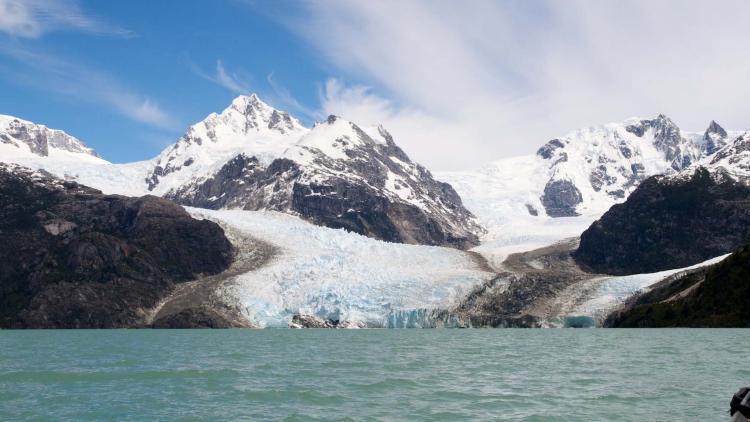After two years, a dedicated group of University Libraries faculty, staff, and students partnered with the National Snow and Ice Data Center (NSIDC) to digitize approximately 9,000 glacial photos from the Roger G. Barry Archives with help from grant funding. This collection which originally lived at NSIDC is critical to the history of glaciology, photography, and the scientists behind the camera.
“Think about these human beings who are out there with dog sleds, carrying all of their photographic developing equipment in the field, taking these photographs, and we still have them today,” said Athea Merredyth, the grant’s Project Archivist of the landscape repeat photography practiced by these scientists.
The Libraries recently acquired the entire NSIDC archival collection which includes an additional 16,000 photographs from NSIDC Glacier Photograph Collection that were previously digitized. These items document glaciology work and photography dating back to the 1890s. The total collection includes works from prominent science figures such as William O. Field.
“Beyond glaciology, I think it’s a really important resource in terms of the history of these scientists and the history of photography,” Merredyth said. The collection includes images from glass plate photography, silver gelatin prints, polaroids and satellite images.
This project received funding primarily through Council on Library and Information Resources (CLIR). The nonprofit organization awards grants for institutional efforts to digitize rare and unique content in collecting institutions. The National Oceanic and Atmospheric Administration (NOAA) kept the analog photos safe for many years at NSIDC and funded the first glacier photograph digitization project in 2002. That early work was the beginning of the online Glacier Photograph Collection.
“NSIDC will continue to collaborate with CU Libraries so that the collection best meets the needs of a wide array of users,” Florence Fetterer, Principal Investigator with NSIDC said. “The digital collection is now available from both CU Libraries and from NSIDC, while the analog collection is archived with CU Libraries.”
When the team first started, the 9,000 photographs were organized by glacier drainage systems in filing cabinets. Their task of re-organizing and connecting names to visuals was essential in order to add metadata to the images for posterity. This included checking descriptions from photography against geography, dating, and numerous glacier data points.
Kathryn Fletcher of University Libraries’ Metadata Services said it was difficult to identify glaciers with the same name, let alone find them at all.
“We were looking at photographs from 50 or 60 years ago and trying to figure out if it was the right glacier or not, and we found a few that were just completely gone that had previously been listed,” Fletcher said.
Assistant Professor and Digital Archivist with the Libraries Special Collections, Archives, and Preservation Walker Sampson said the team was motivated to bring to the surface all of this glacier data and make it easily accessible.
“We all felt that it would be just an immense value to have everything essentially in the glacier photography collection digitized and online, available for comparison and reflection,” Sampson said. “That was a major motivator. Now our work to capture that metadata is available for general and scholarly audiences. In coordination with NSIDC, we can now focus on stewardship of the physical material and improving accessibility for users.”
Thirty photos from the Robert G. Barry Archives are on display as part of the exhibit “Documenting Change: Our Climate (Past, Present, Future)” at the CU Art Museum. These images taken in Glacier Bay, Alaska, will remain up through July 20. The rest of the acquired physical collection is being kept in Norlin Library on the CU Boulder campus. All photos are available through the Digital Library and are intended for general audiences. NSIDC also hosts a portal to the collection for scientific reference.

Thirty images from the Glacier Photograph Collection project affiliated with University Libraries and NSIDC on display as part of the "Documenting Change" exhibit at the CU Art Museum.






